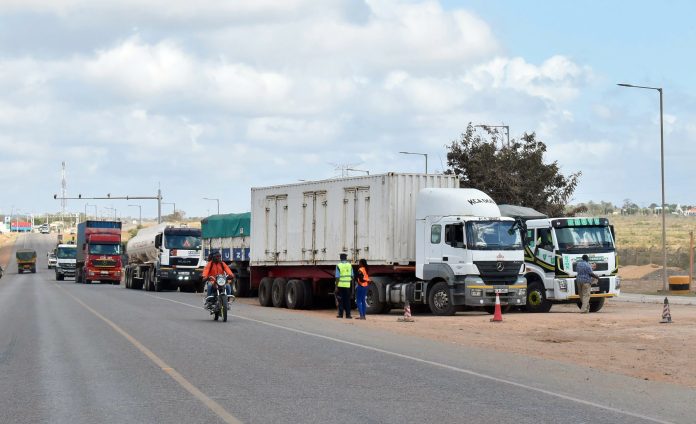Facebook Twitter (X)
Congo (DRC) Emerges as Fastest-Growing Export Market
In the latest data from Kenya’s National Bureau of Statistics (KNBS), it has been revealed that the Democratic Republic of Congo (DRC) has emerged as Kenya’s fastest-growing export market within the East African Community (EAC), surpassing Uganda despite the strained diplomatic relations between Nairobi and Kinshasa and the ongoing political instability in the DRC.
Surge in Exports to Congo (DRC)
Kenya’s exports to the DRC surged by an impressive 56.04 percent to Ksh8.62 billion ($66 million) in the first quarter of 2024, marking the highest year-on-year growth in over a decade. The notable increase in exports to the DRC has been largely attributed to enhanced shipments of wheat flour.
Impact of Reduced Import Duties
This growth trend has persisted since Kenya reduced import duties on wheat from 35 percent to 10 percent in July of the previous year, aiming to ensure adequate local supply while safeguarding domestic wheat farmers from international competition.
Congo (DRC) is Growing Share of Kenyan Exports
Despite the robust growth rate, the DRC still trails other EAC destinations for Kenyan goods, with Burundi being an exception. Nonetheless, the DRC’s share of Kenya’s exports to the regional bloc has risen significantly, reaching 10.74 percent in the latest quarter compared to 7.96 percent previously.
Diplomatic Tensions and Resolutions
This surge in exports comes against a backdrop of diplomatic tensions between Kenya and the DRC, exemplified by Kinshasa’s recall of its ambassador to Nairobi over disputes regarding the hosting of Congolese opposition figures. The situation only began to thaw when Kenya’s President William Ruto dispatched a high-profile delegation to Kinshasa, led by Prime Cabinet Secretary and Cabinet Secretary for Foreign Affairs Musalia Mudavadi.
High-Level Diplomatic Engagement
“My mission here in Kinshasa was to deliver to President Felix Tshisekedi a special message from President William Ruto of Kenya, that we are partners and, as countries within the East African Community, have to continue working together very cordially and closely,” said Kenya’s Prime Cabinet Secretary and Cabinet Secretary for Foreign Affairs Musalia Mudavadi.
He added that “Kenya respects the territory and sovereignty of DRC and I assure the people of DRC that Kenya will always work with them to ensure there is peace and harmony in the region at all times.”
In contrast, Uganda remains Kenya’s largest trading partner within the EAC despite a more modest growth rate of 7.39 percent in Kenyan exports, totaling Ksh33.34 billion ($258 million). This growth primarily stemmed from increased orders of specific articles like carboys, bottles, and flasks, and similar articles according to KNBS.
Challenges and Resolutions in East African Trade
The broader context of East African trade dynamics reveals ongoing challenges, including sporadic trade disputes between Kenya and Uganda, which recently led to restrictions on import permits for goods such as eggs, sugar, and milk powder. Resolutions have been sought through diplomatic channels to uphold the principles of the EAC Customs Union Protocol, which promotes seamless trade across member states.
“We have agreed that trade between the two countries is unimpeded either by tariff or non-tariff barriers or arbitrary levies,” Dr. Ruto said on May 16 after he hosted his Ugandan counterpart, Yoweri Museveni, for a two-day State visit.
“We have agreed that the common principle will be the full implementation of the EAC customs and other infrastructure that support trade between East African countries. Therefore, all the issues around rice, juice, furniture, eggs, chicken, and sugar are now resolved.”
Overall, the KNBS data highlights Kenya’s evolving export dynamics within the EAC, with the DRC emerging as a significant growth market despite diplomatic challenges. The region continues to navigate trade complexities while striving for deeper economic integration and cooperation, essential for sustained growth and stability across East Africa.
Read more:

